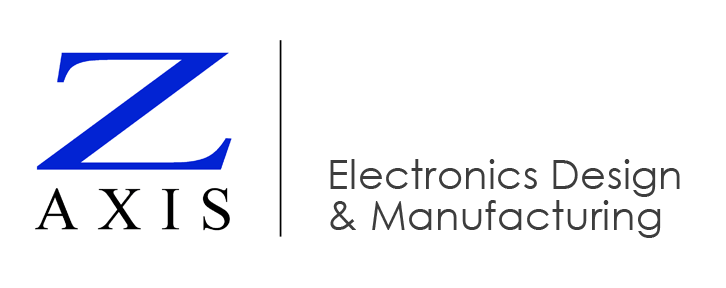Watch how double-sided PCBAs (printed circuit board assemblies) are made.
Normally, the first side is completed using the surface mount technology (SMT) process including robotic pick-and-place and solder reflow. How we handle the second side depends on many factors, including:
- board layout
- size (or mass) and type of components
- production volume
- manufacturing tools available.
The second side of double-sided PCBAs could be soldered using our reflow oven, wave solder, selective soldering, robotic soldering, or hand soldering.
Learn more about how Z-AXIS manufacturers double-sided PCBAs at our Made in USA manufacturing facility.
Ever wondered how double-sided printed circuit board assemblies are manufactured?
Normally the first side is completed using the normal SMT (surface mount technology) process including robotic pick-and-place and solder reflow. How we do the second side depends on many factors. These include the board layout, the size (or mass) and type of components, the production volume, and the manufacturing tools available. So the second side might be soldered using the reflow oven, the wave solder, selective soldering, robotic soldering or hand soldering.
Watch this video to learn more about how we use these different techniques at our PCBA manufacturing center in the USA.
Transcript
Today let’s look at how we manufacture double-sided printed circuit boards.
First, let’s look at surface mount technology or SMT components. These components are mounted and soldered on the board surface. This is done by printing solder paste, placing components, passing the board through a reflow oven to melt the solder, and then allowing the assembly to cool to solidify the solder.
For double-sided SMT boards we repeat the entire process. This time, as the board passes through the reflow oven, the solder on the first side WILL melt and reflow again. These components will be on the underside and will be held in place by surface tension. But it’s important for the board designer to understand that, and keep the heavier components on one side, so they can be on the top side of the board during its second pass through reflow. This is a very high yield and reliable process.
Now let’s consider mixed-technology boards. These have both surface mount and through-hole components.
Through-hole component leads are inserted through the board, automatically or by hand. The leads are soldered on the opposite side. There are a number of choices for soldering through-hole components. These include wave solder, selective soldering, hand soldering and robotic soldering. Which process you choose depends on the complexity of the SMT components.
If the SMT components are simple, it is reasonable to just glue them to the underside of the board and give the board one pass through the wave solder. The SMT components on the underside of the board are in the solder. The wave will solder both the SMT leads and the through hole leads. This is a high throughput and fairly high yield process, but only works for simple SMT components.
Larger and heavier SMT components may fall off in the wave, and fine-pitch SMT parts and land grid arrays really do need their leads soldered using the SMT reflow oven. So for these more complex parts, we first complete the SMT process. Then we insert and solder the through-hole components.
Now the board can be sent through the wave solder, but a fixture must be used to protect the SMT components. This is effective, but adds to the cost.
Or We can use selective solder instead. With this high-end machine, multiple boards are processed at once, and throughput is nearly as high as with wave solder. The yield is very high, but not every contract manufacturer has a high-end selective solder system like this one at our contract manufacturing center near Rochester, NY.
Finally, boards can be soldered manually or robotically. Hand soldering has the lowest yield and throughput, but can be a reasonable option for very low-volume jobs or boards with just a few through-hole components. Robotic soldering has high yields, but requires fixtures.
In every case, it is important that the board designer understands the manufacturing processes and capabilities. For example, selective soldering requires sufficient clearance between the SMT components and the through hole leads.
Contact Z-AXIS for more information about double-side printed circuit board design and manufacturing in the USA.
Learn more
Related video: Why through-hole PCBs?
Made in the USA: PCBA contract manufacturing capabilities
